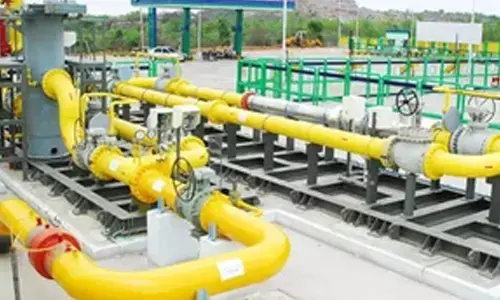IVL proves boon for doctors to treat calcified coronary blocks

IVL proves boon for doctors to treat calcified coronary blocks
Coronary Heart Disease (CHD) is the most common form of heart disease and is a leading cause of death among both men and women globally
Bengaluru: Coronary Heart Disease (CHD) is the most common form of heart disease and is a leading cause of death among both men and women globally. CHD happens when the arteries supplying blood to heart muscle, also called coronary arteries, become constricted due to lipid or calcium deposition in their wall. The blocked arteries fail to supply optimal blood supply to the heart and the heart fails to pump properly. Patients with such blocks are treated by angioplasty, a procedure by which the blocked coronary arteries are opened using a balloon catheter and then a stent (wire mesh) is placed to prevent it from closing again.
Elaborating on the topic Dr Davinder Singh Chadha, professor and senior consultant, cardiology, Manipal Hospitals, said that presence of calcium makes the procedure complex as it is difficult to open the arteries with balloon catheters, making the stent deployment difficult.
"In addition, these patients are at risk of developing complications during the procedure like perforation, dissection of the artery etc. Suboptimal deployment of stent due to calcium leads to early stent failure presenting as fresh heart attack," he added.
A team of doctors led by Dr Davinder Singh Chadha performed a high precision angioplasty on two patients, using a new tool for breaking the calcium deposits called Intra Vascular Lithotripsy (IVL) under the guidance of OCT.
First patient was Dhirendra Kumar Thakur, a 51-year-old Air Force veteran, a patient of diabetes, hypertension and coronary heart disease. He underwent a coronary angiogram which revealed blockage in two branches of coronary arteries.
The second patient was Mr Krishnan M, 75-year-old Army veteran, who suffered severe chest pain and breathlessness. His angiogram revealed critical calcific narrowing of the large left main coronary artery with total occlusion of another artery. This put 85% of his heart muscle at jeopardy. The risk of cardiac bypass surgery was very high in these patients in view of other comorbidities. Hence, coronary angioplasty was chosen as the treatment of choice.
Intravascular Lithotripsy (IVL) balloon was used in both the cases to treat the calcified coronary blocks. IVL is a device which when put in the coronary artery emits sonic pulses (high pressure sound waves) to fracture the calcium in the walls of coronary artery. Once the calcium in the artery was fractured a drug-eluting stent is implanted successfully. IVL balloon treatment in both the patients made the placement of stent easier and safer.
Both patients recovered well after the procedure. Highlighting the usefulness of the new tool in CHD management, Chadha opined: "We now have a new tool for treating calcified coronary vessels called the IVL balloon. This is a specially designed balloon with two emitters which convert the electrical energy into sonic waves at high pressure. This technology is being used by our urology colleagues for decades for fracturing kidney stones. For precise use this balloon is inserted in the coronary artery under fluoroscopy. Once in place the sonic waves from it crack the coronary calcium while leaving the normal vessel wall unaffected.
He further stated that: "IVL under the guidance of OCT made the complex procedure safer, quicker and effective." More importantly, this technology works both for superficial and deep calcium whereas most of the existing technologies work only for the superficial calcium. "Using advanced imaging technology like OCT makes it possible to diagnose and determine the extent and distribution of calcium in the blocked heart blood vessels and subsequent use of IVL balloon helps us treat these complex calcified blocks without complications.
Dr Sridhara G, consultant, interventional cardiology, cardiac electrophysiology, Manipal Hospitals, who was also part of the team that performed the procedure, added that this new technique has enabled us to successfully generate enough luminal space by 'cracking' calcium so that a correct size drug eluting stent can be placed in the coronary artery after removing the block. This ensures good short-term and long-term outcomes. He further emphasized that in the second case in spite of the challenging anatomy and high risk involved in the procedure, use of IVL technology cracked open the left main block facilitating the rapid deployment of the hardware including the stent. Procedure could be completed efficiently and safely with optimal stent deployment.














